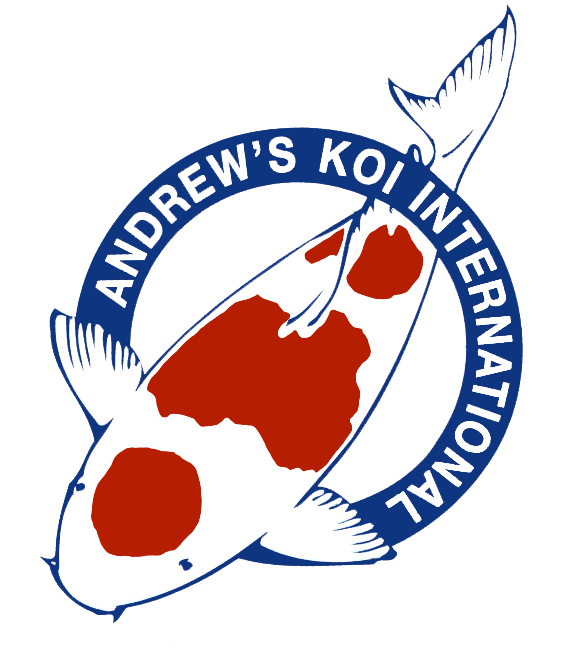HOT WEATHER POND TIPS
By Ray Jordan
Texas Koi and Fancy Goldfish Society
I have had several phone calls recently about pond problems that were directly related to
our summer heat. It is the “Dog Days of Summer” already and the heat can be a real
problem for you, your pond, and your fish. So what are some of the things you need to
know and can do to help your pond and it’s inhabitants thrive during the summer?
1. The biggest hazard to your fish in the warmer months is low oxygen levels. Air breathing creatures like us live in an oxygen rich environment that is about 21% oxygen. However the amount of oxygen dissolved in water is so small it is measured in parts per million.
At 90 degrees Fahrenheit only about 7.0 parts per million of dissolved oxygen can be maintained in fresh water. It would take a lot of aeration to get your ponds oxygen to near saturation levels. 7.0 ppm is about 50,000 times less oxygen than found in the air we breathe. At elevations above sea level the amount of oxygen would be even less. There is really very little cushion when you consider that koi and goldfish become stressed at oxygen levels of 4.0 ppm and start dying at 3.0 ppm. Hopefully, this gives you some appreciation of how important aeration is to your fish. Also, remember that the beneficial bacteria that live in your filter are dependent on the amount of oxygen in the water to thrive and do their job of converting ammonia to nitrites and nitrates by utilizing the dissolved oxygen in your pond as well. Therefore low oxygen levels would suppress the “good” bacteria and let ammonia levels
increase to potentially dangerous levels.
Finally, the aquatic submerged plants like algae in your pond are both beneficial and detrimental to oxygen levels. During the day green plants produce oxygen. However, at night, these same plants consume oxygen and compete with your fish for the limited supply of oxygen in the water. This is why fish kills usually happen in the early morning hours. For this reason you should measure your oxygen levels in the early morning.
Sadly, I have had several calls already this year where pond owners have had fish die because of low oxygen levels. As you can guess these fish kills are cascades of events that can finally result in a disaster. A combination of warmer water, faster plant growth, and a growing biomass of fish finally cause the oxygen level to drop to the point where fish are stressed enough to get sick or start dying.
OK! Now you know the problems of low oxygen levels. So how do you measure your pond’s oxygen level and correct it if needed. The easiest method is to buy an oxygen test kit. Be sure to get one for fresh water. You fill a test tube with pond water to a predetermined level and then add a reagent and match the color to a chart. You also, need to know your pond’s water temperature to determine how “saturated” your pond is with oxygen. The goal is to approach the saturation point at a given water temperature. Also, you should place additional air stones in your pond during the hottest summer months. If your current air pump does not allow you to add more air stones consider buying another air pump to allow you
to add more air stones for the hottest summer months. Remember, if your electricity goes off for some reason during the hottest summer months you will have much less time before the oxygen is depleted from your water if the oxygen level was not at maximum saturation already.
How much aeration should you have in a healthy moderately stocked koi pond? I would suggest at minimum 80 liters per minute per 3,000 gallons of water. This can be supplied in a variety of ways. Use air stones positioned in your pond, waterfall area or filters. Some type of koi pond filter also requires aeration and this counts towards your total as well. It is almost impossible to supply too much aeration to a koi pond in warmer months.
2. You need to do what you can to keep your pond water temperature from getting above 90 degrees Fahrenheit. You can assume your fish are stressed if your water temperature goes over 90 degrees or your pond temperature changes by more than +/- 5 degrees during the day. Find a way to shade your pond from the hottest part of the afternoon sun. Plant a tall hedge on the west side of your pond or place
some tall pot plants to help provide some relief. Consider building an arbor over your pond or a trellis to help provide some shade. If you have water lilies try to get about 50% - 60% of the water surface covered. Increase your water circulation. Also, if you have an outside filter system for your pond try to create some shade for it as well. Perhaps you could build a trellis or plant a hedge that could act not only as a sunscreen but also hide the filter from view for the rest of the year. If you have a waterfall or fountain increase the water flows if you can.
If your fountain can be adjusted try for a fine mist type effect. Maybe this is the time to consider getting a larger water pump. This will promote evaporation which will have an additional cooling effect. Another method to cool the area around your pond is to use one of the “mist-er” products you might have noticed
at some restaurants and amusement parks. We have one that we bought at Home Depot for about $13. You hook the mist-er to a garden hose and it has several tiny outlets that create a very fine almost fog like mist that can cool the immediate area by up to twenty degrees. This mist-er could be placed on a timer to come on for an hour or so every afternoon in the hottest part of the day. A side benefit to
this is you can be more comfortable and able to enjoy your pond on even the hottest afternoons. Several years ago we went on a summer pond tour in Florida and every backyard used these misters to cool the area. The amount of water they use is very minimal. Perhaps a few gallons an hour at most.
3. Reduce the amount of food you feed and also reduce feedings to only once or twice a day. Try to feed in the morning or late evening when the water temperature is lower. Remember optimum water temperature for koi and goldfish is between 70 and 78F degrees. Once your water temperature goes above that level over feeding your fish can cause additional problems with ammonia levels and oxygen depletion.
4. Warmer water temperatures and stressed fish can also mean increased susceptibility to parasites. Anchor worms and fish lice can be seen without a microscope but flukes and other microscopic fish parasites cannot. There is an article in this newsletter that deals with parasite detection and control. Learn how to scrape your fish and look for parasites with a microscope. I hope that this article will help you have a problem free summer. I guess the heat is the price we pay for our wonderful snow free winters. As far as I know no one has ever had to shovel sunshine.



